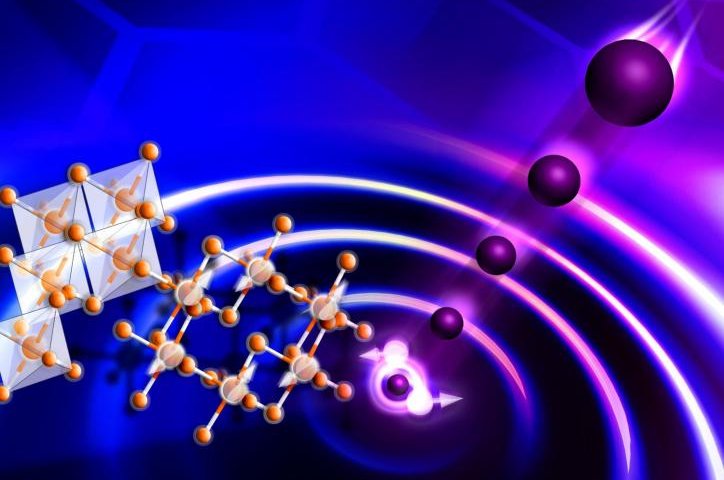A diagram shows the excitement of electrons, triggering a new state of matter, in a graphene-like 2D lattice structure. Photo by Cambridge University
CAMBRIDGE, England, April 4 (UPI) -- A team of quantum physicists has discovered a mysterious new state of matter in a two-dimensional material. Scientists are calling the state "quantum spin liquid."
The novel state was predicted 40 years ago. Now, researchers have direct evidence.
Quantum spin liquid is characterized by the breaking apart of electrons. The electron fragments are called Majorana fermions. While observing particle behavior inside a graphene-like 2D material, scientists at the University of Cambridge recorded the signatures of these fractional particles.
What they saw matched the predictions of theoretical models for a quantum spin liquid.
The mysterious state explains anomalies inside magnetic materials. Electrons in magnetic materials each behave like miniature bar magnets. As a material is cooled, the electrons each line up in accordance with magnetic north -- all pointing the same direction.
This doesn't happen in magnetic materials boasting quantum spin liquid, where electrons refuse to align. Instead, their quantum fluctuations result in a soup of entangled electrons.
"Until recently, we didn't even know what the experimental fingerprints of a quantum spin liquid would look like," researcher Dmitry Kovrizhin, a physicist at Cambridge's Cavendish Laboratory, said in a press release. "One thing we've done in previous work is to ask, if I were performing experiments on a possible quantum spin liquid, what would I observe?"
Research led by Johannes Knolle in 2014 -- also of Cambridge's Cavendish Laboratory -- offered a theoretical blueprint for the signature of electron fractionalization.
There's now hard proof of Knolle's predictions.
"This is a new addition to a short list of known quantum states of matter," said Knolle.
"It's an important step for our understanding of quantum matter," said Kovrizhin. "It's fun to have another new quantum state that we've never seen before -- it presents us with new possibilities to try new things."
The discovery was detailed in a new paper, published this week in the journal Nature Materials.
Researchers believe these fractional particles, or fermions, could be harnessed for improved quantum computing power.















